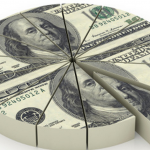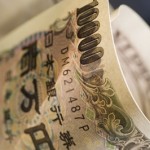Following several articles covering case studies of companies that have successfully taken steps to “return value to shareholders” (Valero Energy (VLO) spun off CST Brands (CST); Newcastle Investment Corp. (NCT) spun off New Residential Investment (NRZ); and Apple Corporation (AAPL) issued $17 billion in corporate bonds as part of its three-year strategy to return $100 billion to shareholders through a combination of share buybacks and increased dividends; and highlighting an ETF that focuses upon corporate “spin off” stocks) I received a note from a reader that started:
“Dear Hot Shot,
I need you to use more graphs, more performance comparisons, and less Ivy League terminology. Just make it clear what I should buy to make money.”
(Note: the sender did not refer to me as “Hot Shot” … his term was much more colorful and not appropriate for polite company).
Well, my response is simple. I have absolutely no problem with graphs and comparisons – I find them extremely helpful myself. However, there isn’t much I can do about “terminology”. What you read is how I think – 24/7. So just be grateful you don’t have to cope with it all the time the way I’m forced to! Finally, with apologies to the gentleman who wrote, I am not qualified to tell him (or anyone else) what should be “bought”!
In this piece, I want to compare and contrast three distinct shareholder-friendly corporate strategies. We know that the average percentage of earnings growth among U.S. companies has been narrowing in recent quarters. However, in the current dismal world economic environment, any “growth” is definitely a treasured quality in and of itself! Therefore, as this most recent period of earnings growth has unfolded, an increasing number of companies have enhanced shareholder value by taking that expression literally and finding ways to return “value” to shareholders! Obviously, one option for achieving this is to (at the right price) sell the company to a third party. That discussion will wait for another time. For purposes of this analysis, the primary ways companies have returned value to its owners include one or more of the following:
1) Initiating or increasing a cash dividend. This is the most common, and best understood, of the methods;
2) Initiating, increasing, or merely continuing a program of buying back its own common stock;
3) Spinning off a distinct portion of the existing company into a separate corporate entity – and simultaneously distributing some portion of that new entity’s common stock to existing shareholders.
The average person expects the “spin off” strategy to be the most complicated and challenging of the above three. To the extent that it involves considerably more planning time, legal and administrative work, management coordination, and countless hours of education and interpretation directed toward shareholders, analysts, and the media– the “average person” is correct. However, there will always be a lot more share buybacks than there will be corporate spinoffs, so it may be even more important to examine the share buyback strategy in some detail, since the impact upon investors will be (in the bigger picture) greater. Confirming this stance (I regret to say) is the very unfortunate reality that corporate management has regularly demonstrated various degrees of ineptitude in handling the buyback strategy.
This topic is particularly germane today because 2013 has so far been a record year for share buybacks. In February, U.S. companies officially authorized $117.8 billion in buybacks – nearly double the level authorized in February of 2012. The magnitude of these corporate actions justifies taking a little extra time to cover some “basics” regarding the buyback strategy.
As you might imagine, there are good reasons for company management to select the buyback strategy and there are poor reasons for management to do so. The “Oracle from Omaha” (Warren Buffett, of course) has frequently written about this strategy in his coveted shareholder letters. Back in the days when IBM Corporation (IBM) stock was under pressure, Buffett confessed that he was “rooting” for IBM’s price to continue to “languish long enough” for IBM management to decide that a big share buyback was in order – thus leading to Berkshire Holdings’ (BRK-B) “share” of IBM business and earnings to increase. (As we described in an earlier article about Apple (AAPL), reducing the number of shares outstanding (the FLOAT) has the impact of increasing earnings per share (EPS)). So buying shares when the price is undervalued is a legitimate way to return value to shareholders.
However, Buffett has also weighed in on the wrong reasons to initiate a buyback:
“Repurchases are all the rage, but are also too often made for an unstated and, in our view
ignoble reason: To pump or support the stock price. The shareholder who chooses to sell today, of course, is benefitted by any buyer, whatever his origin or motives. But the continuing shareholder is penalized by repurchases above intrinsic value. Buying dollar bills for $1.10 is not good business for those who stick around. [Italics are mine]
“We will not repurchase shares unless we believe Berkshire stock is selling well below intrinsic value, conservatively calculated. Nor will we attempt to talk the stock up or down. (Neither publicly or privately have I ever told anyone to buy or sell Berkshire shares.) Instead we will give all shareholders — and potential shareholders — the same valuation-related information we would wish to have if our positions were reversed.” [1]
What would motivate management to initiate a share buyback besides share price sitting below actual value? One possibility is pressure from one or more dissident shareholders. That is a matter of weighing financial realities against corporate politics – far beyond my “pay grade”. Another possibility relates to executive compensation arrangements. In those cases for which executive bonuses are tied to “per share growth metrics” such as EPS – there is a huge potential conflict of interest between management and shareholders. In what some experts characterize as management through “financial engineering”, even an inept management team can pull off a buyback, thereby increasing earnings per share and allowing members to grab a bonus. Buffett would never tolerate that within his growing stable of companies!
Short of depending upon CNBC to uncover such companies, how does the average investor ferret them out? When “earnings before interest, taxes, depreciation, and amortization” (EBITDA) is not growing and/or operating expenses are not declining… and yet EPS shows an encouraging upward trend… that is a likely indicator of such financial engineering. I would not appreciate that in any company whose stock I owned!
Another key point regarding share buybacks is this: corporate management is too often as poor at “market timing” as the average investor. Case in point: in what year did S&P 500 buybacks reach a seminal peak?
Answer: 2007, when management approved $589 billion worth of share buybacks!! (And right at the peak of the market!) Since corporate management’s fiduciary duty is strictly to serve the interests of shareholders and ensure the maximization of shareholder value (I can hear Wall Street veterans chortling derisively even as I write this – some calling me a “chump”, others a “fool”, while the kind ones label me “naïve”) the goal of “buybacks” should strictly be to take advantage of market conditions when company shares are underpriced vis-à-vis some objective measure of value. Measured by that standard, it is my opinion that a share buyback plan being authorized when a stock reaches a new five-year high does not make economic sense (Delta Airlines (DAL) did that earlier in May).
Now that we have completed “the lesson of the day”, and you have the earlier articles on the spin-off strategy and dividend increases, we can move on to compare and contrast these strategies within real market conditions!
The only “pure” buyback strategy ETF is PowerShares BuyBack Achievers Portfolio (PKW). The ETF’s investment strategy is focused upon the NASDAQ Buyback Achievers Index, designed and developed by Ford Research. This index is comprised of stocks that have repurchased at least 5% of their total shares outstanding over the past year and is weighted by market cap.
GRAPH: above is a graph of PKW vs. the S&P 500 Index for the past 17 months. The S&P is in red, so you can see the PKW has handily out-performed the S&P. (All graphs are created through YahooFinance.com).
GRAPH: the graph above shows YTD performance of PKW vs the S&P 500 (red). The trend is similar to the first graph.
GRAPH: above is the two year price chart of the SPDR S&P Dividend ETF (SDY)(a well-performing U.S. equity dividend ETF, typical of returns from domestic dividend stocks). The price chart of the S&P Index is shown in red. SDY has slightly outperformed.
GRAPH: above is the one-year price chart of the SPDR S&P Dividend ETF (SDY). Once again, SDY has slightly outperformed the S&P Index (in red).
GRAPH: the graph above, we see a six-month chart of SDY vs. the SPY 500. Outperformance by SDY is more clearly evident.
One interesting ETF often referred to in connection with the “buy back” strategy is the Trim Tabs Float Shrink ETF (TTFS). Remember that “float” refers to the number of outstanding common shares of a company stock. So “shrink” refers to the reduction of that “float”. Therefore, this ETF sounds like one laser focused on stocks with buybacks. However, the fund’s strategy is not restricted to buyback. Here is the summary from YahooFinance:
“The fund is an actively managed exchange-traded fund that seeks to achieve its investment objective by primarily investing in the broad U.S. equity market, as represented by the index. It seeks to achieve this goal by investing in stocks with liquidity and fundamental characteristics that are historically associated with superior long-term performance.” The graph below shows the TTFS price chart relative to the S&P 500 Index (in red) over the past one-year period.
Below are two graphs – both of which show the price chart of TTFS (blue) compared with PKW (green) and the S&P 500 Index (red). The upper graph covers the prior six-month period. The lower graph reflects the longer one-year period.
Since during the six month and one-year periods, both TTFS and PKW performed better than the S&P 500 Index, an investor would have benefited from owning either one. However, if one was committed to a pure “buyback” strategy, the choice would need to be PKW.
Finally, bringing the spin-off ETF into the picture (Guggenheim Spin-Off (CSD)), the graph below reflects the relative performance of PKW and CSD during the prior two-year period (upper graph) and six-month period (lower graph).
With the caveat that past performance never ever, ever can be counted upon as a predictor of the future, the conclusion I draw is that a during the market periods shown through the above graphs, a buyback strategy has been superior to either a dividend strategy or a spin-off strategy, and yet any one of the three has been superior to the S&P 500 Index itself.
DISCLOSURE: the author does not own any of the above ETFs, except for SPY (a proxy for the S&P 500). These articles have sparked his interest in PKW and TTFS.
Submitted by Thomas Petty
Related Posts
Also on Market Tamer…
Follow Us on Facebook

 Is IonQ Stock a Buy?
Is IonQ Stock a Buy?



